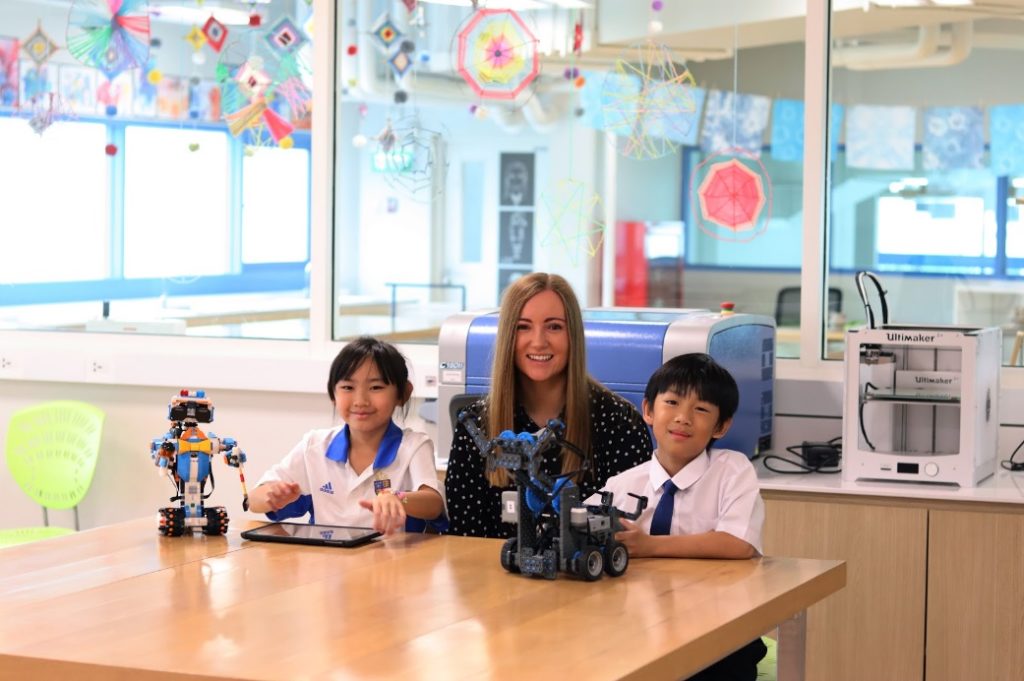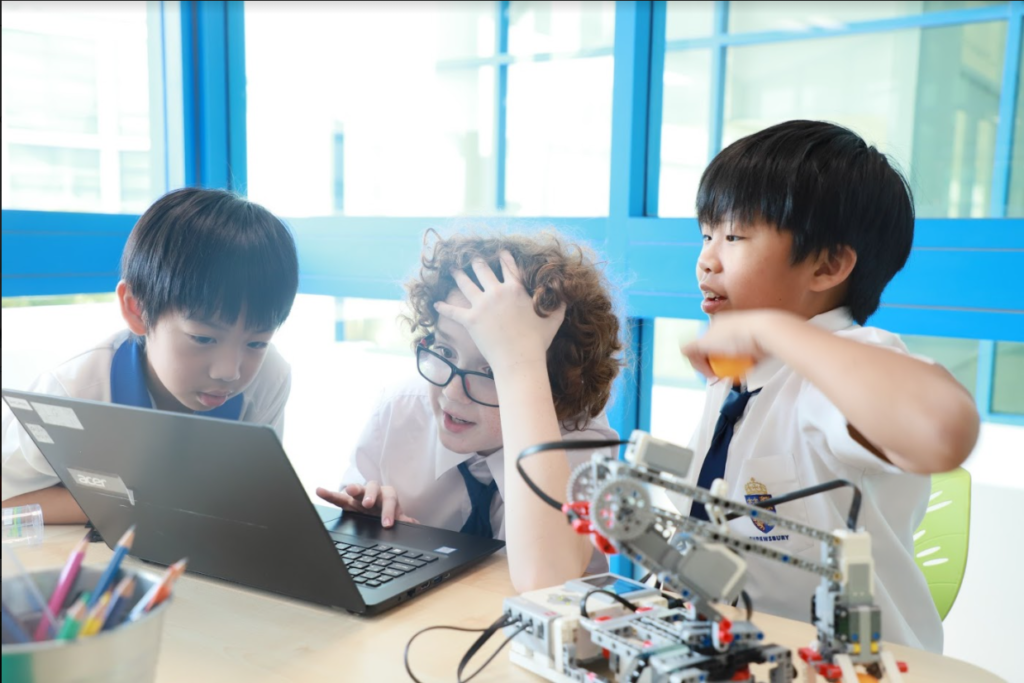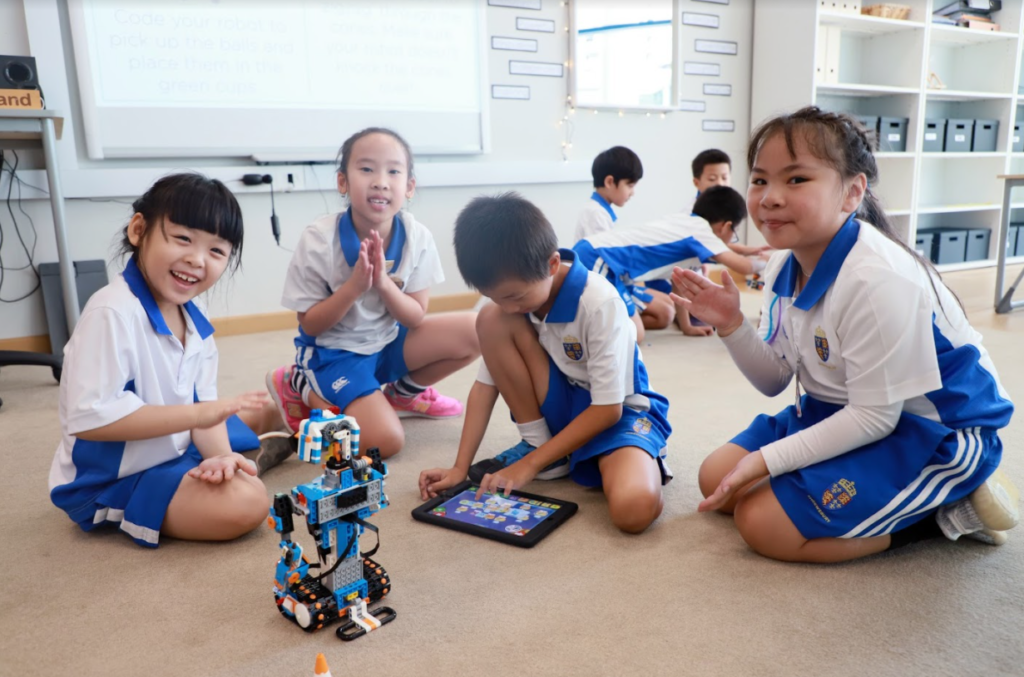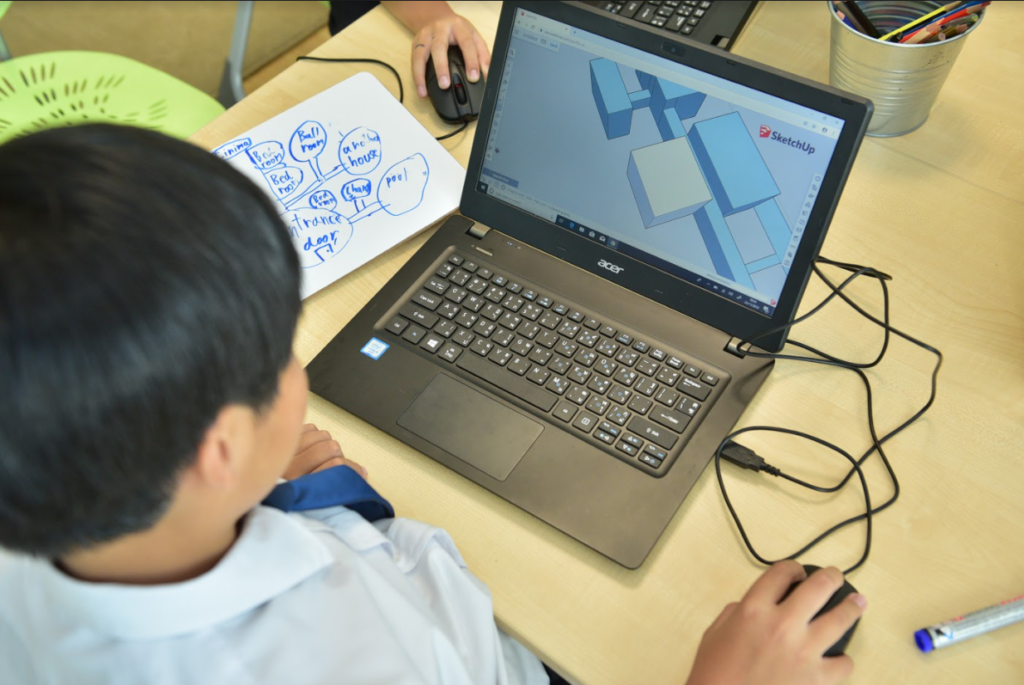
No one can deny the benefits advanced technology has afforded us. In our increasingly computerised world, information is available in an instant and digital solutions have consigned many frustrations of the past to history.
But such a fast and relentless pace of change requires the next generation of innovators to be equipped with an increasingly creative and lateral-thinking skillset; a skillset which is able to meet future unpredictabilities face on and provide solutions which, in 2021, would be impossible for us to imagine.
How can parents and educators ensure our children have the competencies they’ll need for this exciting and digital future? What can we do today to produce developed minds at the forefront of innovation?

At Shrewsbury International School Bangkok City Campus, we believe it starts with five basics.
- Encouraging curiosity
Questions. So many questions! Why? When? Where? Who? What? Which? How?The educational attention your child needs is huge. Children are in a world they know little about and are filled with intrigue. They’re in a natural mode of discovery and the benefits children receive from parents and educators who understand how to utilise this critical period could enhance cognitive development for life.
Consider answering even the most abstract of questions patiently and through the prism of your child’s own perspective. During this important developmental stage, the provision of simple knowledge will build the basic connections in your child’s mind and help prepare for later years and more complex technical understanding.
- Enabling environments for a child’s imagination
An imaginative mind is a curious mind. And a curious mind seeks answers. Children are naturally creative and this should always be encouraged and celebrated. But are the environments in your home or at your child’s school sufficient for your children to explore and experiment in safety?While superficially it might look like play; my child running and roaring with their toy dinosaur seems like simple fun; developmentally however, your child is growing important centres in their brain responsible for emotional, social, communicative, creative and – perhaps most importantly – problem solving skills. Feed this imagination with enabling spaces and encourage a naturally enquiring mind to grow.
- Finding answers through exploration and experimentation
Exploration is fed from natural curiosity. By allowing the young, developing mind to explore and experiment in the physical environment, we allow children to open-endedly hypothesise and test ideas – providing huge amounts of information, which can eventually be taken into the digital sphere.Experimentation might be the simple act of pouring water into a container to see what happens; what if I don’t stop pouring when it’s full? Where does the water go? It could be in the mixing of ingredients; do they stay the same or does something change when I mix these things together? Or it might even be something more complex; how about coding a robot or writing a computer programme?
Our children learn from the confirmatory information gained by exploration, which allows young minds the chance not only to learn – but for the brain to develop critical cognitive skills such as memory, logic and reasoning as well as processing speed.
- An important precept: technology as a tool
The question of when to introduce children to digital technology is something many parents struggle with. It’s an unprecedented and forever evolving situation; for many of us, our own childhood was much less digital. Yet in only a single generation, we must now be the voice of reason and balance in deciding when to allow young and impressionable minds access to such powerful tools. The “when” must be decided at an individual level – no one approach can yet be considered the best. However, one precept must be understood by children from an early age: digital technology as a tool – like a hammer to a nail or a spoon to food.Carefully consider how you use technology in front of your children, especially mobile technology and your screen time. A child’s perception of its appropriate use is filtered through you.
By understanding digital technology’s purpose and mastering its potential we therein utilise its power and ready our future thinkers for the coming decades. When children see technology as a helpful aid as opposed to a social necessity, the marriage of this tool with a questioning mind can yield such creative ways in which to problem solve and open literally infinite possibilities.
- Seeing change as an opportunity
We’re naturally creatures of habit – routine and structure are of course extremely important, especially for children. But inevitably life is about change; especially digitally and technologically. Those who are most equipped to navigate adjustment in an agile manner are those who will reap the most reward.Change can often be difficult, but when we find ourselves in situations beyond our control, our emphasis must return to self. The ability to control our own experience rather than trying to control the world around us is a skill many children will take time to master. But by redirecting our talent toward something which can be controlled, the ability to make change a positive opportunity becomes enhanced.
There are a myriad of variable factors which dictate a child’s ability to adjust to transition, but there are things which can be done to help; by learning to embrace change and becoming flexible with it; by facing fears and seeing them objectively; and by focusing on the things that can be controlled, we utilise not only the wisdom and guidance of previous generations but can also draw from our own understanding to steer change toward a favorable destination in the future.

Shrewsbury International School Bangkok City Campus is a purpose-built international day school for boys and girls aged 3-11 years. It is the first primary school in the world to offer the DEC (Design, Engineer, Construct) programme.
Its purpose built Design and Technology department includes a CAD (Computer Aided Design) innovation suite, workshop space and laptop suite, fully equipped with a range of CAD software, a variety of robotics for all age groups, CAM (Computer Aided Manufacture) facilities including a 3D printer and laser cutter and a range of workshop and textiles equipment.
On Saturday 30th January, Shrewsbury City Campus will host a live virtual admissions event, starting at 10am. Join via Zoom and meet specialist Head of Design and Technology, Katie Holland.

Katie will be joined by Amanda Dennison, Principal, to show prospective parents and students the benefits a Shrewsbury education at City Campus can offer.
For more information about Shrewsbury City Campus’ ‘Virtual Open House: Why Design & Technology?’ Event, please click here.
www.shrewsbury.ac.th/city
Facebook, Instagram, Twitter, YouTube @SHBcitycampus
+66 2 203 1222
[email protected]

